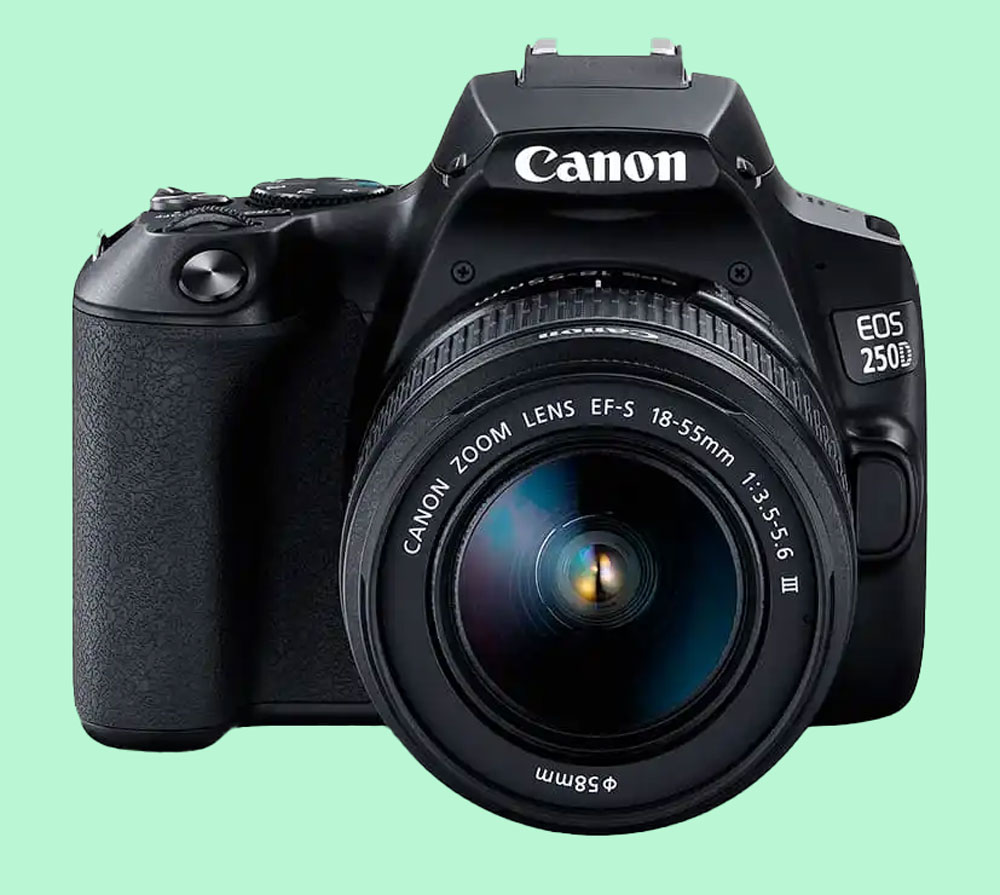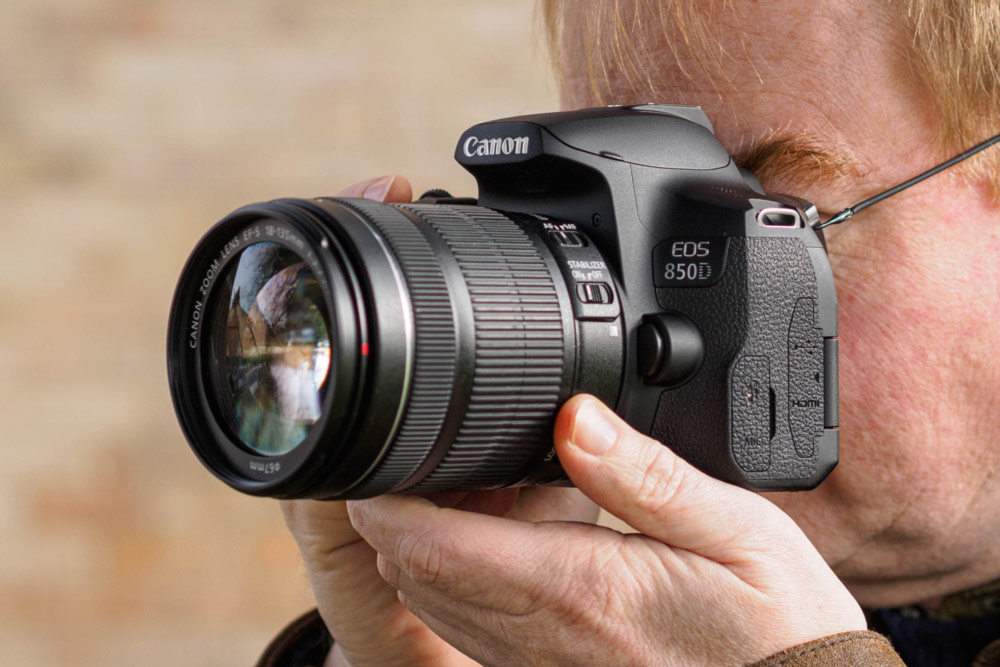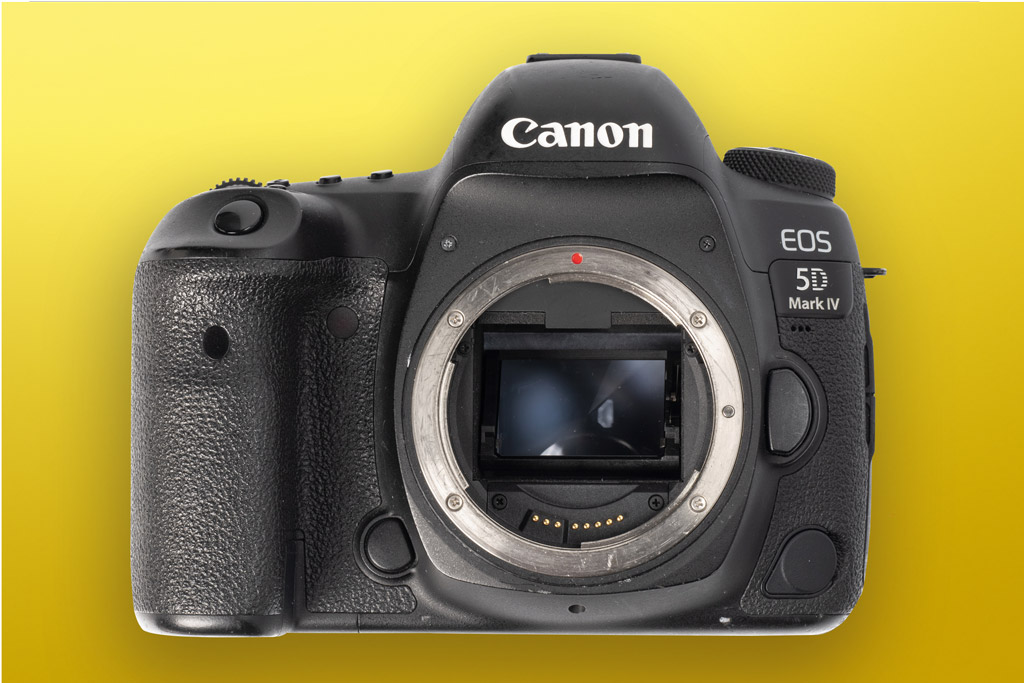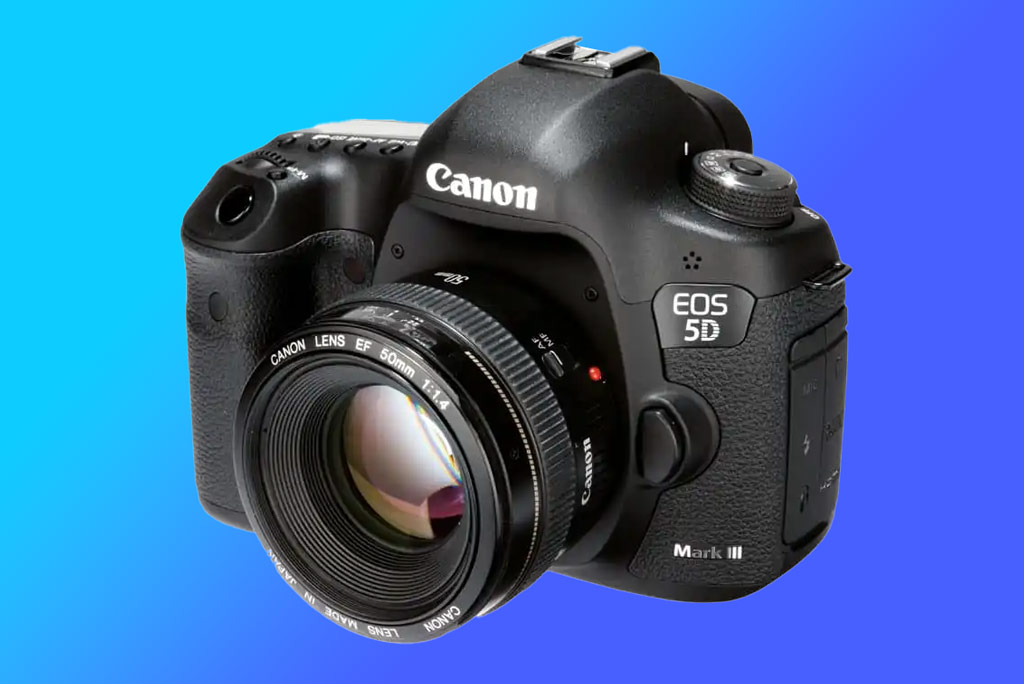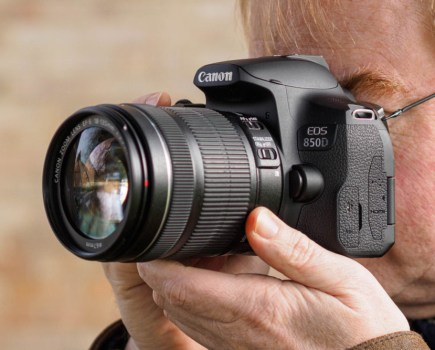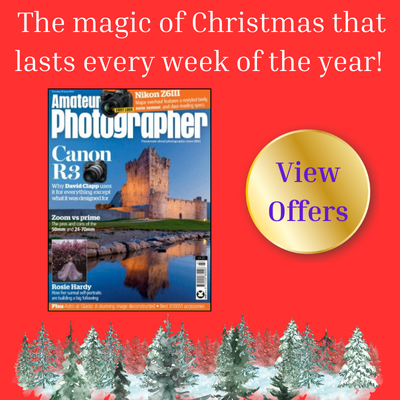For many photographers, you can’t beat the feel of the best DSLR cameras. While mirrorless may have well and truly taken over in the professional space, DSLRs still have their devotees who love optical viewfinders, chunky handgrips and the option to choose from plenty of lenses. Loads of photographers still take pictures on DSLRs every day – and there’s no reason why you shouldn’t too.
This list represents the DSLRs that have most impressed our review team – expert photographers who have spent time with these cameras and understand their strengths and weaknesses. We also regularly update and reassess our reviews to make sure they’re still accurate. Many DSLRs are very popular on the second-hand market, and price fluctuations mean that a camera that was once a bit of a rip-off could now be quite the bargain.
This guide contains the best of the best from the key DSLR manufacturers — Canon, Nikon and Pentax. If you want to know more about DSLRs, scroll to the bottom of this page where we’ve put together an explainer and answers to some commonly asked questions. And don’t forget that you’ll also want to pick up one of the best Canon EF lenses, best Nikon lenses or best Pentax lenses, depending on which camera you end up picking.
The best DSLRs: our quick list
Looking for the best deal on a DSLR? Not only will you find the best DSLRs, but also some of the best deals, as our ‘Buy now’ buttons are setup to automatically take you to the best prices from trusted retailers. You’ll also find a list of other retailers below each camera, so you can find the right deal for you.
- Best DSLR overall: Nikon D850 – buy now
- Best beginner DSLR: Nikon D3500 – buy now
- Best lightweight DSLR: Canon EOS 250D / Rebel SL3 – buy now
- Best DSLR for travel: Canon EOS 850D / Rebel T8i – buy now
- Best DSLR for enthusiasts: Canon EOS 90D – buy now
- Best DSLR for black and white: Pentax K-3 Mark III Monochrome – buy now
- Best DSLR for sports and action: Nikon D500 – buy now
- Best value full-frame DSLR: Pentax K-1 Mark II – buy now
- Best full-frame DSLR for enthusiasts: Nikon D780 – buy now
- Best professional DSLR: Canon EOS 5D Mark IV – buy now
- Best cheap DSLR: Canon EOS 5D Mark III – buy now
Why you can trust Amateur Photographer
We spend many hours testing every product we recommend, in detail, in a variety of situations and shooting scenarios, and only use experts for our reviews, so you can be sure that you’re getting the best products. Find out more about our expert writers.
BEST DSLR OVERALL
Best DSLR overall: Nikon D850
Amateur Photographer verdict
One of the most famous and enduringly popular DSLRs around, the Nikon D850 delivers superb images in so many genres, though it particularly excels for wildlife. A full-frame DLSR superstar.- Rugged, reliable, highly capable
- Excellent image quality
- Snappy shooting speed
- Limited touchscreen functions
- Still pricey
At a glance
- 45.7MP full-frame sensor
- 153-point autofocus system
- ISO 64-25,600 (expandable to 32-102,400)
- Up to 7fps continuous shooting
- 3.2-inch, 2.26million-dot LCD screen with touchscreen control
- Around $2,200 / £2,440 body only
This brilliant professional all-rounder DSLR provides a winning combination of high resolution and speed. Its 45.7MP full-frame sensor produces fine results at high ISOs and the autofocus is incredibly responsive and accurate. The build quality and handling should also satisfy the most demanding of users. It’s an absolutely sensational camera capable of tackling any type of subject. It proved hugely popular among professional and enthusiast photographers – there’s a reason that when Nikon launched the wildlife-focused mirrorless Z8, they billed it as the ‘true successor to the D850’ (when it was really just a slimmed-down Z9, but whatever).
The D850 inherited almost all of the AF features of the Nikon D5 DSLR that was primarily aimed at sports photographers, but the D850 is capable of capturing much more than sports and action. It uses a backside illuminated sensor, which helps to increase the efficiency of the sensor, (thus improving low light performance), and improves peripheral image quality at the edges of pictures. It also has no anti-aliasing filter, which allows for finer detail capture in images. The camera also offers excellent battery life and has an impressively low ISO speed of 32 available (extended), that goes up to 102,400 (extended). You can record 4K UHD video at 30fps, which uses the full width of the sensor.
The D850 still holds its head up very high amongst the best Nikon cameras (including mirrorless models), even though it launched back in 2017. Because Nikon put a lot of top-line technology into the D850 it remains a great choice for many photographers – wedding, sports, nature, fashion, portrait, landscape and more. In our full review and test, we summed up by saying, ‘The D850 is an absolutely sensational camera’, and that holds true to this day. In full-frame DSLR terms, it’s still a star.
BEST BEGINNER DSLR
Best beginner DSLR: Nikon D3500

Amateur Photographer verdict
An excellent choice for first-time DSLR buyers. A reliable little camera that we recommend especially to beginners, though it is getting harder to find.- Superb battery life
- Beginner-friendly modes
- Good image quality
- No vari-angle LCD
- Not weather sealed
At a glance
- 24.2MP APS-C sensor
- ISO 100-25,600
- 1080p Full HD video at up to 60fps
- 11-point AF system
- 3-inch, 920K-dot LCD screen
- From £470 / $585 with 18-55mm VR lens
Nikon’s entry-level DSLR hits a rare sweet spot of capability versus affordability (at £399 body only). It sports a 24MP APS-C sensor with a sensitivity range up to ISO 25,600, and can shoot at a more than reasonable 5 frames per second. It’s getting as little trickier to find, as you’ll definitely have to go second-hand
The D3500’s Guide Mode makes the camera easy to use for beginners, while full manual control is also available – so this is clearly a camera that you won’t outgrow as your photography skills develop. As we said in our review, this is a camera that does pretty much everything beginners will need it to. There’s no weather-sealing, and no vari-angle screen, but otherwise this is a really solid package.
Although the sensor has the same effective 24.2MP resolution as Nikon’s earlier D3400 and D5600 cameras, the sensor in the D3500 is an updated version. It does away with an optical low-pass filter to help to maximise the ability of the sensor to resolve fine detail images.
The D3500 is also notable for its a great body design, deep grip and an intuitive layout of controls that make it straightforward to use. You’ll also find a range of Nikon lenses available, with Nikon ‘DX’ lenses being specifically designed for the the camera’s APS-C sensor.
BEST LIGHTWEIGHT DSLR
Best lightweight DSLR: Canon EOS 250D / Rebel SL3
Amateur Photographer verdict
Generously featured, easy-to use entry-level DSLR with very good overall image quality. Enough fine detail to make large prints. Several novice-friendly features, plus for advanced photography too.- Impressively comprehensive autofocus
- Useful Guided Mode
- Vari-angle LCD
- 4K 25p video isn’t great
At a glance
- 24.1MP APS-C CMOS sensor
- ISO 100-25,600
- 4K video at 24/25fps
- 9-point AF (3,975-point AF in Live View)
- 3-inch, 1040K-dot vari-angle touchscreen LCD screen
- 449g (body with battery)
- Around £620 / $770 with 18-55mm IS lens
One of the smallest DSLRs around, the EOS 250D strikes a great balance between portability and usability, not to mention a stunning AF system when in Live View! It’s the smallest and lightest DSLR with a multi-angle screen; weighing in at just 449grams with battery and measuring 122x93x70mm. Like the D3500, it’s not as readily available as it used to be, but you shouldn’t realistically have a problem finding one second-hand or refurbished if you need to.
The EOS 250D’s Dual Pixel AF system offers 3,975 user-selectable focus points across the whole screen when shooting in Live View mode – a very impressive feature on a budget DSLR. The camera has a 24MP APS-C sensor and offers 4K video recording. The 250D’s DIGIC 8 processor also supports a range of improvements in Live View AF, along with Eye AF, an Auto Lighting Optimizer, a Digital Lens Optimizer and Highlight Tone Priority.
It’s equipped with a novice-friendly Guided Mode and image quality is very good, delivering vibrant colours and plenty of fine detail. The vari-angle touchscreen makes composing, focusing and shooting very straightforward, or you can shoot via a traditional optical viewfinder, with its more basic 9-point AF.
Other notable features include in-camera editing for both JPEG and RAW files, along with Canon’s well-implemented Bluetooth 3 and Wi-Fi connectivity for pairing the camera with smartphones (via the Canon Camera Connect app). This lets you share images and control the camera remotely. Entry-level DSLRs face fierce competition from compact mirrorless models these days, but the EOS 250D remains a fantastic little camera.
Read our Canon EOS 250D / Rebel SL3 review
BEST DSLR FOR TRAVEL
Best DSLR for travel: Canon EOS 850D / Rebel T8i
Amateur Photographer verdict
The Canon EOS 850D / T8i was first launched back in 2020, and remains an interesting choice for keen beginners who like the DSLR design, and owners of older Canon DSLRs looking to upgrade.- Lightweight and travel-friendly
- Sophisticated autofocus system
- Works well in Live View
- Poor, rather bland viewfinder
- Small, fiddly rear control dial
At a glance
- 24MP APS-C CMOS sensor
- ISO 100-51,200 (extended)
- 7.5fps continuous shooting
- 4K video recording
- Fully articulated touchscreen
- Around £999 / $749 body-only
This may seem strange to say, but Canon probably doesn’t want you to buy this camera. The firm would prefer you to choose one of its similarly spec’d (and similarly priced) APS-C mirrorless options, like the EOS R7 or EOS R10. There are many compelling reasons for this – however, the EOS 850D is still widely sold, and remains an attractive option for those who want a lightweight, travel-friendly DSLR.
The EOS 850D (or Rebel T8i in the US) was something of an anomaly even on release. When we reviewed the camera in 2021, our technical editor remarked that it was the first time he’d had cause to review a new DSLR since 2017. As such the EOS 850D contained a lot of likeable features, many of which make it feel much more up to date than the older DSLRs on this list. Face-detection autofocus while using the viewfinder is very welcome, as is the faster 7fps burst rate; not to mention the addition of 4K video (albeit with that infamous Canon crop).
The fact that it’s able to benefit from recent technology also means that Live View focusing on the 850D is much better than on most other DSLRs. In fact, the EOS 850D is arguably better to use in Live View than it is with its rather small and inaccurate viewfinder. This is odd for a DSLR, given that viewfinders are meant to be their big USP.
While it’s not quite as slimline as the EOS 250D, the EOS 850D only weighs 515g and packs in a lot more features. This makes it a great choice for travel, and you should be able to acquire a few lightweight EF lenses to go with it. This alone makes it a much better buy than the the EOS M50: the camera that was its mirrorless equivalent at the time. And also, frankly, the RF-S lens selection for the R7 and R10 is still currently pretty poor, making the EOS 850D a compelling alternative.
Read our Canon EOS 850D review
BEST DSLR FOR ENTHUSIASTS
Best DSLR for enthusiasts: Canon EOS 90D
Amateur Photographer verdict
For advanced amateurs and enthusiasts, the Canon EOS 90D is a great choice. It’s the best APS-C enthusiast DSLR Canon ever made, capable for photos and video alike.- Excellent image detail
- Uncropped 4K video
- Satisfying ergonomics
- One card slot
- Dated viewfinder AF system
At a glance
- 32.5MP APS-C CMOS sensor
- ISO 100-25,600 (expandable to ISO 51,200)
- 10fps continuous shooting (11fps in Live View)
- 220k pixel RGB+IR metering sensor
- Dual Pixel CMOS AF with Eye Detection AF
- 3-inch, 1040K-dot LCD screen
- Around £1,200 / $1,299 body only
The EOS 90D has been designed to excel at all genres of photography and video, but is particularly handy for sports and wildlife photographers who demand a camera that can rattle out a continuous burst and resolve excellent detail from a high resolution 32.5MP APS-C CMOS sensor.
This well-made camera can shoot at 10fps with autofocus tracking when using the viewfinder and 11fps when using Live View with fixed AF, and there’s also Canon’s Eye Detection AF with tracking for stills and movies. You can also record 4K video (using the full width of the sensor) at 25/30p or Full HD video at up to 120fps, which is great for shooting slow-mo sequences. Indeed, this camera and its predecessors (the EOS 70D and 80D) saw considerable popularity among YouTubers, and while there are better pure vlogging options out there for your money, the EOS 90D is still a pretty credible hybrid camera.
The EOS 90D incorporates a 220,000-pixel RGB+IR exposure sensor, which helps it to dissect and analyse scenes effectively for consistent and accurate exposure metering. Evaluative metering is linked to all AF points, with partial and spot metering covering approximately 6.5% and 2% of the viewfinder respectively.
A rear 3-inch, 1040k-dot vari-angle (which aids creative framing and composition) touchscreen displays a good, clean feed to assist composition and video recording in Live View. Images are well displayed in playback mode too. Colours are faithful and you get four thumbnail views to quickly search through hundreds of images on the memory card. As we said in our review, an extra card slot would have been nice, but otherwise there isn’t much to fault on this excellent camera.
BEST FOR BLACK AND WHITE
Best DSLR for black and white: Pentax K-3 Mark III Monochrome

Amateur Photographer verdict
A monochrome specialist that’s dramatically more affordable than Leica’s alternatives, the K-3 Mark III Monochrome is a tempting proposition for B&W enthusiasts.- Gorgeous, low-noise monochrome images
- Weather-sealed body
- Big range of K-mount lenses
- Effective in-body stabilisation
- Fixed rear screen
- Fairly expensive for APS-C
At a glance:
- 25.7MP APS-C sensor
- ISO 200-1,600,000
- 12fps continuous shooting
- 0.7x pentaprism viewfinder
- 3.2in, 1.62m-dot touchscreen
- 5-axis in-body image stabilisation
- Price: $2,200 / £2,249 body-only
Monochrome-only cameras have become quite popular in recent years, largely thanks to releases from Leica. This DSLR from Pentax, which debuted in 2023, is now far and away the most affordable monochrome specialist camera you can buy, and as we discovered in our review, it’s really rather good.
You might think that a camera physically incapable of shooting colour images sounds like a bit of a white elephant, but there are advantages to owning one beyond simply preferring the look. A sensor that doesn’t have a colour filter array, with no demosaicing process required for creating the final image, can produce images with sharper detail, greater dynamic range and lower noise. So goes the thinking, anyway.
In practice it does work. The Pentax K-3 Mark III Monochrome produces lovely images, even when you pump up the ISO, making it a beast in low light. What’s more, even when digital noise does creep in, the monochrome palette means it more resembles stylish film grain than ugly digital artifacts.
With dual card slots, a capable autofocus system and highly effective in-body stabilisation that works even when you’re using vintage K-mount lenses. As a newer DSLR it’s holding its price for now (a price that was already a tad… ambitious), but if you love monochrome images, love DSLR handling, and don’t have the money for a Leica, it’s a camera that more than justifies itself.
Read our full Pentax K-3 Mark III Monochrome review.
BEST FOR SPORTS AND ACTION
Best DSLR for sports and action: Nikon D500
Amateur Photographer verdict
This is a fine crop-sensor camera with feature that are still competitive today. Build and handling are exemplary, aided by some well-judged tweaks to the control layout.- Excellent, reliable autofocus
- Does well at high ISO settings
- Well-optimised grip
- Quite heavy for APS-C
- Poor AF speed in Live View
At a glance
- 20.9MP APS-C DX-format sensor
- ISO 100-25,600 (extendable to 50-1,640,000)
- 4K video (cropped), Full HD video at up to 60fps (full width)
- 153-point AF system
- 10fps continuous shooting
- 3-inch, 2.36million-dot tiltable LCD screen
- Around $1,050 / £750 (used) body-only
While this pro-quality APS-C camera (which came out back in 2016) can no longer be considered as ‘cutting edge’, it’s still a remarkably well-featured camera. Its 20.9MP DX-format sensor affords an impressive standard sensitivity range of ISO 100-51,200, and a frankly staggering extended range of ISO 50-1,640,000, with great noise performance.
It can shoot at 10fps, and keep going for at least 30 frames in RAW format, and 90 or more in JPEG mode, with an SD card. If you place an XQD card in the second slot, and it’ll keep shooting at full speed for 200 frames in RAW.
The D500 uses a 153-point AF system that covers almost the full width of the frame and around half its height. Metering employs a 180,000-pixel RGB sensor that also feeds subject-recognition data to the AF system. Nikon specifies that both systems work in extremely low light: at -3EV for metering and at -4EV for autofocus.
The D500 gives the impression of being built like a tank. The magnesium-alloy body has a bombproof feel to it, and a well-designed grip means that it fits perfectly in the hand. Almost every square inch of the body is covered in buttons and dials, which give direct access to all the key functions – so much so, that there’s rarely any need to access the menus.
Overall, the D500 is one of the most accomplished crop-sensor DSLRs ever made. It’s at its best when used as a conventional DSLR for shooting fast-moving subjects. When we first wrote our review, we found the price to be a stumbling block, but these days the D500 is available for a reasonable outlay second-hand.
BEST VALUE FULL-FRAME DSLR
Best value full-frame DSLR: Pentax K-1 Mark II
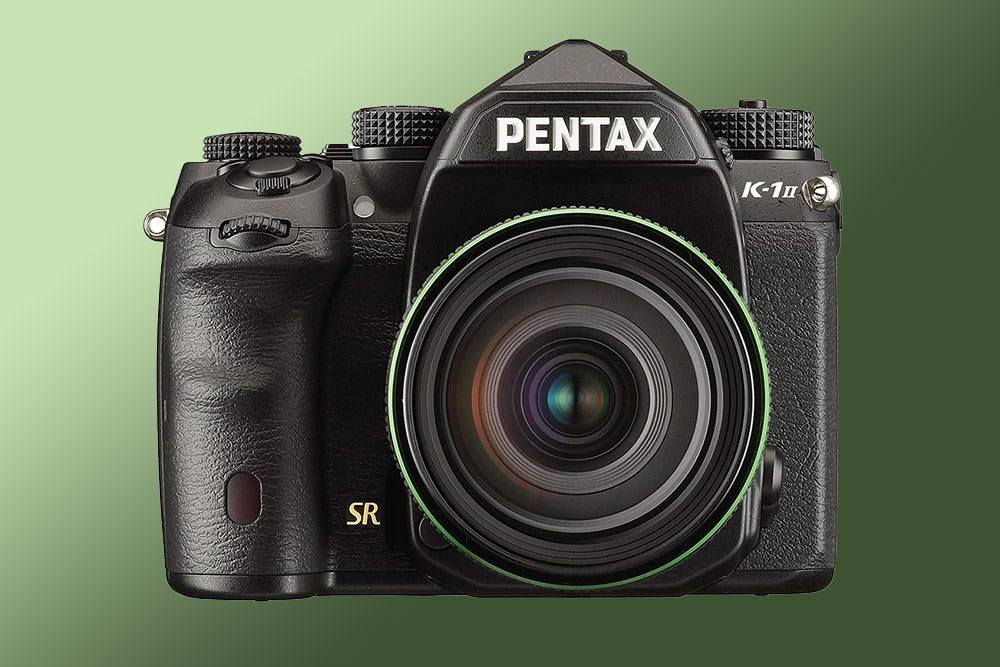
Amateur Photographer verdict
Still flying the flag for DSLRs, Pentax brings a lot to the table with its K-1 II. The stabilisation impresses, significantly expanding the user’s options when shooting handheld.- Extremely solid weatherproofing
- Powerful ‘Shake Reduction’ stabilisation
- High-quality 36MP images
- Burst mode tops out at 4.4fps
- High ISO settings are unusable
At a glance
- 36MP full-frame sensor
- ISO 100-819,200
- 1080p Full HD video at up to 60i
- 33-point AF system (25 cross-type points)
- 3.2-inch, 1,037,000-dot tilting TFT LCD screen
- Around $1,700 / $1,500 body only
Pentax has resolutely stuck with DSLRs, and this attractive camera (originally announced in early 2018) includes a 36MP full-frame sensor. It also features a flexible tilt-type LCD monitor, and SAFOX 12 autofocusing system with 33 sensor points (25 of which are cross-type points). Its optical viewfinder gives 100% field of view, and its body is weatherproof and dust-proof, with dual SD card slots. You get Full HD video recording and a built-in GPS module. It tops our list of the best Pentax DSLRs, and may for a while yet.
The flagship K-1 Mark II features an anti-aliasing, filter-free design to help to optimise its image resolving power. It also comes with the 5-axis, Pixel Shift Resolution System II to help keep shots sharp when handheld. The Pixel Shift Resolution System II was an upgrade from the original K-1 system with a new mode that can be used when shooting handheld.
Pentax’s parent company Ricoh claims the Dynamic Pixel Shift Resolution mode can be used in conjunction with the camera’s shake-reduction mechanism to create high-resolution shots without any evidence of camera shake.
An incorporated accelerator unit was designed in the K-1 Mark II to help when shooting in low-light to produce images with low levels of noise and high detail. ISO sensitivity was also increased to ISO 819,200, with the promise of improved noise reduction even at such high ISO levels. In practice though, you’re best off not pushing it above 51,200, as images above this are simply too compromised to be useful.
The K-1 Mark II camera also benefits from the wide range of Pentax K-mount lenses that’s available. There are over 150 lenses made for the system, giving you incredible optical opportunities for shooting a wide range of subjects.
Discover more about the Pentax K-1 Mark II
BEST MID-RANGE FULL-FRAME
Best full-frame DSLR for enthusiasts: Nikon D780
Amateur Photographer verdict
The Nikon D780 was one of the last great DSLRs – and it’s still great. Weather sealed, with brilliant handling, it features a reliable autofocus system and superb high-ISO performance.- Excellent Live View focusing
- Superb weather sealing
- Sensor performs well across the board
- No pop-up flash
- No joystick
At a glance
- 24.5MP full-frame CMOS sensor
- ISO 100-12,800 (extendable to 50-204,800)
- 51-point AF system (15 cross-type points)
- 12fps continuous shooting in Live View
- 3.2-inch, 2,360K-dot tilting touchscreen LCD
- Around $2,000 / £1,600 body only
On its arrival in 2020 the D780 was the long-awaited successor to the Nikon D750 and it showed that there was life in the DSLR yet. It’s superbly built with extensive weather sealing, handles brilliantly, and gives excellent results in any conditions. As we said in our full test and review of the D780, it will provide top-level service to photographers who want to keep using their F-mount lenses and still prefer an optical viewfinder.
The D780 offers a 24MP full-frame CMOS sensor that gives excellent noise performance, as well as offering uncropped 4K UHD video recording, and an impressive ISO range from 50 to 204,800 (extended). On the rear of the camera you’ll find a 3.2-inch 2,360K-dot tilting touchscreen, and there’s also in-camera USB charging.
As well as having a low-pass filter to eliminate moiré and backside-illuminated structure to maximise its light gathering capabilities across its ISO range, the sensor has 273 on-chip phase detection pixels to enhance its focusing performance in Live View. Again, this is said to be crossover technology from the Nikon mirrorless camera line-up.
The D780 also employs Nikon’s EXPEED 6 image processor which, amongst other things, helps to shoot at 7fps via the viewfinder. A shutter speed range of 30-1/8000sec should pretty much over all subjects and the 180K-pixel RGB sensor inherited from the D850 helps to feed info to the AF system for accurate and precise tracking of subjects. For DSLR fans the D780 offers a superb array of shooting options and choices for capturing all manner of subjects.
BEST PROFESSIONAL DSLR
Best professional DSLR: Canon EOS 5D Mark IV
Amateur Photographer verdict
The last and best of the famous EOS 5D series, the Mark IV performs well at high ISO settings, and offers radically improved dynamic range compared to its predecessor.- Hugely impressive dynamic range
- Robust build quality
- Its price has dropped
- Vicious 1.74x crop on 4K video
- No clean HDMI out
At a glance
- 30.4MP full-frame CMOS sensor
- Dual DIGIC 6 & DIGIC 6+ processors
- ISO 100-32,000 (expandable to 50-102,400)
- 7fps continuous shooting
- 61-point AF system (41 cross-type points)
- 3.2in, 1,620k-dot, fixed touchscreen LCD
- Built-in Wi-fi, NFC and GPS
- Around $2,299 / £2,700 body only
Canon’s workhorse EOS DSLR ticks all the right boxes for both enthusiast and professional photographers and continues the long-standing legacy of the ground-breaking 5D-series of cameras. It handles well, is built to a robust standard and saw the addition of long overdue features such as Wi-Fi, GPS and touchscreen LCD control.
The 30.4MP full-frame CMOS sensor gives excellent results, and autofocus is impressive for both Live View and normal shooting, thanks to the Dual Pixel CMOS AF system. This sensor-based phase-detection AF system supports Servo AF when shooting stills in Live View, thus opening up the opportunities to pinpoint focus on a subject and track it as it moves through the frame, while the shutter button is half-depressed.
The camera has an ISO range of 100-32,000, which can be further extended to 50-102,400. The camera offers 4K video shooting at 24fps, 25fps and 30fps and up to 7fps continuous shooting is available, but that drops when you enable Dual Pixel Raw. During Dual Pixel Raw shooting, a single RAW file saves two images into the file. Thus Dual Pixel Raw files contain a normal image as well as parallax information, which can be measured and subject distance information extrapolated.
- If you want to see how the Canon EOS 5D IV and the Canon EOS R5 compare, see our comparison.
It’s the EOS 5D Mark IV’s 30.4MP sensor that steals the limelight. When we fully tested the camera, we found that the sensor’s performance at high ISOs, combined with its radically improved dynamic range, made it markedly better than its 5D Mark III when it came to returning high levels of detail to shadowed areas in post-production and shooting images with less noise in low-light.
Read our Canon EOS 5D Mark IV Review
BEST CHEAP DSLR
Best cheap DSLR: Canon EOS 5D Mark III
Amateur Photographer verdict
On arrival, the Canon EOS 5D Mark III offered a markedly improved focus system, and better low-light performance. Now that it’s getting on in years, it offers great value for money.- Improved AF system over Mark II camera
- Improved low-light performance
- Great value used
- Only FullHD video
- High-shutter count to watch out for
At a glance
- $500 / £500 in good condition used
- 22.3MP full-frame CMOS sensor
- ISO100 – ISO25,600 (expandable to 102,400)
- 61-point AF system
- 6fps continuous shooting
- Full HD video recording
The Canon EOS 5D Mark III didn’t seem much of an upgrade of the 5D Mark II, with a 22.3MP full-frame sensor, but it did improve low-light performance, with better noise performance. It also noticeably upgraded the auto-focus system, with 61 AF points, and this means more shots in focus compared to the Mark II.
It was the first Canon to introduce HDR shooting, letting you shoot 3 shots at different exposures, for bracketed HDR shots. However, you can also expand the dynamic range by shooting in RAW.
You can buy this camera second-hand for $500 / £500 or under. It’s worth looking out for a low shutter count camera when buying used, as the shutter unit is only rated for 150,000 shots, and once that’s gone, it’s likely to be an expensive repair bill.
- If saving money appeals to you, have a look at our guide to the best second-hand DSLRs.
If you do buy this camera, make sure you update the firmware, which means you’ll get an improved camera. Some of the highlights include uncompressed HDMI output (v1.2.1), and improvements to autofocus. You can download the firmware directly from Canon’s website.
Read our Canon EOS 5D Mark III Review
What is a DSLR?
The Digital Single Lens Reflex (DSLR) camera was the evolution of the SLR, after the solid-state (digital) camera sensor had been invented. They pretty much replaced film cameras in the first decade of this century, and in the second and third have been slowly usurped by developments in mirrorless cameras. It remains the format of choice for some photographers of serious sports, wildlife and other fast action photography. Pentax is the only major company that continues to invest in them.
DSLR cameras use the same mechanism as SLR (Single Lens Reflex) cameras, but instead of exposing the image onto a film, they utilise digital sensors. As light enters the camera through the lens, the photographer is able to see the image through an optical viewfinder as a reflection of the light is projected up using a mirror inside the camera body. When the shutter button is pressed this small mirror flips out the way letting the light fall directly on the camera sensor. This digital sensor captures and transforms light into electrical signals then converts it to a digital image. The photograph is then saved onto an SD card.
Mirrorless vs DSLRs – what’s the difference?
The essential difference between DSLRs and mirrorless cameras is that DSLRs have an internal mirror mechanism that allows them to field an optical viewfinder. Mirrorless cameras don’t (hence the name), and rely on an electronic viewfinder instead. You can read about this in more detail in our guide to DSLRs vs mirrorless.
It used to be the case that DSLRs were also more rugged and weatherproof than mirrorless cameras. This isn’t really the case any more, with mirrorless having caught up in this department. But a good DSLR is generally still an excellent outdoor camera.
The other big advantage of DSLRs, however, is one that grows with every passing year: they’re cheaper. As more new fancy mirrorless models arrive, the discounts on DSLRs stack up. This is especially the case in the second-hand market.
What sensor size do I need?
There are two main sensor sizes in DSLRs: APS-C and Full-Frame. Which one you will need depends on the type of photography you are shooting.
APS-C sensors are smaller – they’re sometimes referred to as ‘crop sensors’, and give a 1.5x (Nikon), or 1.6x (Canon) view, when compared to full-frame. This crop factor means that the lens you have on the camera has a longer effective focal length. For example, a 100mm lens on a Nikon APS-C DSLR will give you an effective focal length of 150mm due to the 1.5x crop factor.
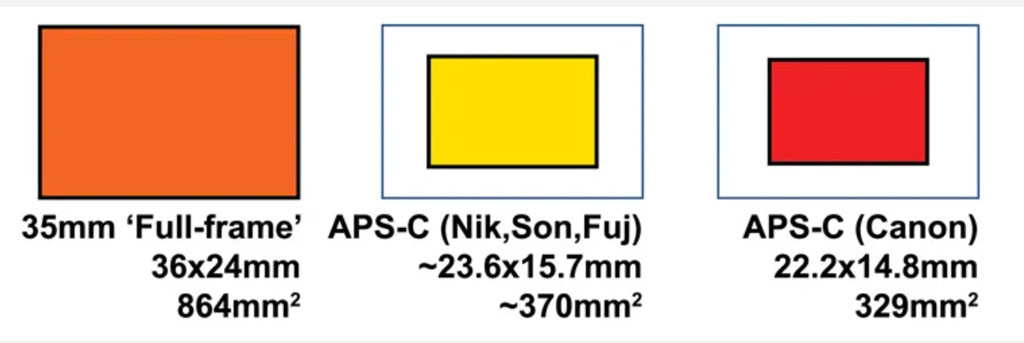
The body of a crop-sensor camera is generally smaller and lighter than the full-frame counterparts, making it ideal for street photography, travel and hiking for example. Also thanks to the crop factor, you are essentially closer to action compared to a full frame camera, that’s why some APS-C cameras are marketed towards wildlife and action photography even though they offer a smaller sensor. Finally, factor in price, crop-sensor cameras tend to be cheaper.
Full-frame sensors give a similar sensor size to 35mm (36x24mm) film – hence the name – as the full-frame sensors are roughly the same size as the frame of a 35mm film.
With full-frame DSLRs, what you see through the viewfinder is usually just what the full-frame sensor is seeing, this is certainly true of the rear LCD in a Live View setting. If you are using a 100mm lens, on a full frame camera that’s the effective focal length you will get when you shoot.
Bigger sensor sizes give better quality images, their low light performance and dynamic range is generally better. If you need high resolution you can find sensors with pixel count as high as 45MP. This makes full-frame cameras better suited to high-detail photography, as well as giving more flexibility for cropping in post-production, while still maintaining a high pixel count. It is also easier to achieve a shallow depth of field effect with a full frame camera, this is why many portrait photographers choose it over a crop sensor.
Do pros still use DSLRs?
Yes — to an extent. While it’s true that mirrorless cameras are very much dominant and have been for some time, there does still remain a place for DSLRs in the professional photography world. Since it’s common practice for pro photographers to carry and use multiple camera bodies, many pros keep one foot in each camp, with a mirrorless model as their primary camera but a trusty DSLR as a secondary. This is particularly common for Canon and Nikon users, as the cross-platform adaptability of lenses provides an extra reason to keep hold of glass from the old system. It’s entirely unremarkable for pro Canon photographers to use, for instance, a Canon EOS R5 and a Canon EOS 5D Mark IV. We will likely see less and less of this as the years go on and mirrorless cameras continue to advance while DSLRs don’t. However, for the time being, a pro photographer using a DSLR is by no means an uncommon sight.
Are DSLR cameras being phased out?
In short — yes. All big camera manufacturers have already dropped out or reported that they will begin to focus on their mirrorless line-up instead of DSLRs, Pentax being the only one still committed to its DSLR line-up. Nikon has announced that it will no longer develop new DSLR cameras and instead focuses on its Z-system. Canon will continue to develop DSLRs if demand persist, however the company is moving their product line towards mirrorless as well. Olympus, Fujifilm and Sony completely phased out their DSLR cameras and sell only their respective mirrorless systems. But this tendency means there are good bargains to be found as DSLR camera prices continue to drop on the second-hand market.
How we test DSLR cameras
We test DSLR cameras primarily by using them to take photographs and video in a wide range of real-world situations. We evaluate their control layouts and handling, and the usability of their viewfinders and screens. We assess their autofocus across a range of different subjects and shooting scenarios and check their continuous shooting capabilities.
We also examine the effectiveness of their image stabilisation systems if they have them built-in to the body, like in Pentax DSLRs. Last but by no means least, we critically evaluate the image quality, in both JPEG and raw, including resolution, high-ISO noise, and dynamic range. We then take all these factors into account, along with such things as portability and lens systems, when giving our final conclusion and score. You’ll find the full breakdown of how each camera has performed in our full reviews.
Further reading:
Follow AP on Facebook, Twitter, Instagram, YouTube and TikTok.



